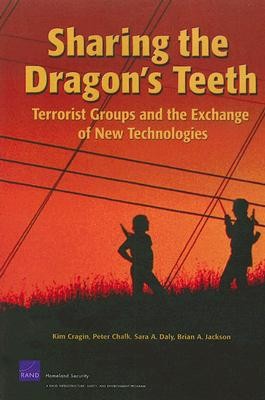
- We will send in 10–14 business days.
- Author: Kim Cragin
- Publisher: RAND Corporation
- ISBN-10: 0833039156
- ISBN-13: 9780833039156
- Format: 15.5 x 22.6 x 0.9 cm, softcover
- Language: English
- SAVE -10% with code: EXTRA
Reviews
Description
Terrorist groups - both inside and outside the al Qaeda network - sometimes form mutually beneficial partnerships to exchange best practices. Operation Enduring Freedom and the global war on terrorism forced many members of al Qaeda to disperse, while like-minded terrorist groups have formed regional alliances and other terrorist groups that are not linked ideologically have formed mutually beneficial partnerships. Understanding these interactions is essential to ongoing and future efforts to counter terrorist threats. (Mindanao, the West Bank and Gaza Strip, and southwest Colombia) have attempted to exchange technologies and knowledge. The authors chose case studies in regions where terrorist groups are highly capable, thus the technologies and exchange processes are weighed toward success and should be of significant concern to the U.S. national security community. The authors examine a variety of technologies and exchange processes, ranging from remote-detonation devises to converted field ordnance to katyusha rockets. innovation processes, and affecting terrorist groups' cost-benefit analyses. This volume should be of interest to homeland security policymakers, the national security community, as well as academics, students, and professionals in counterterrorism, homeland security, and organizational learning.
EXTRA 10 % discount with code: EXTRA
The promotion ends in 20d.22:35:05
The discount code is valid when purchasing from 10 €. Discounts do not stack.
- Author: Kim Cragin
- Publisher: RAND Corporation
- ISBN-10: 0833039156
- ISBN-13: 9780833039156
- Format: 15.5 x 22.6 x 0.9 cm, softcover
- Language: English English
Terrorist groups - both inside and outside the al Qaeda network - sometimes form mutually beneficial partnerships to exchange best practices. Operation Enduring Freedom and the global war on terrorism forced many members of al Qaeda to disperse, while like-minded terrorist groups have formed regional alliances and other terrorist groups that are not linked ideologically have formed mutually beneficial partnerships. Understanding these interactions is essential to ongoing and future efforts to counter terrorist threats. (Mindanao, the West Bank and Gaza Strip, and southwest Colombia) have attempted to exchange technologies and knowledge. The authors chose case studies in regions where terrorist groups are highly capable, thus the technologies and exchange processes are weighed toward success and should be of significant concern to the U.S. national security community. The authors examine a variety of technologies and exchange processes, ranging from remote-detonation devises to converted field ordnance to katyusha rockets. innovation processes, and affecting terrorist groups' cost-benefit analyses. This volume should be of interest to homeland security policymakers, the national security community, as well as academics, students, and professionals in counterterrorism, homeland security, and organizational learning.


Reviews